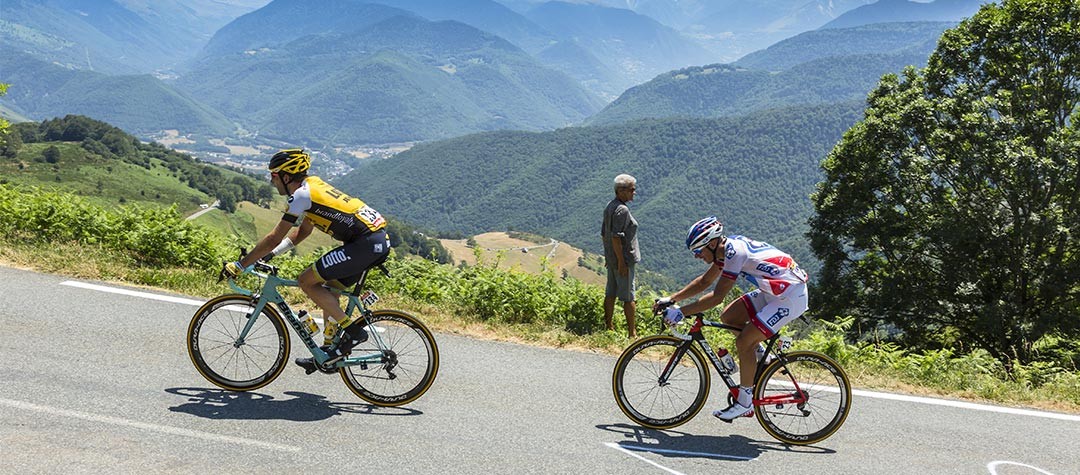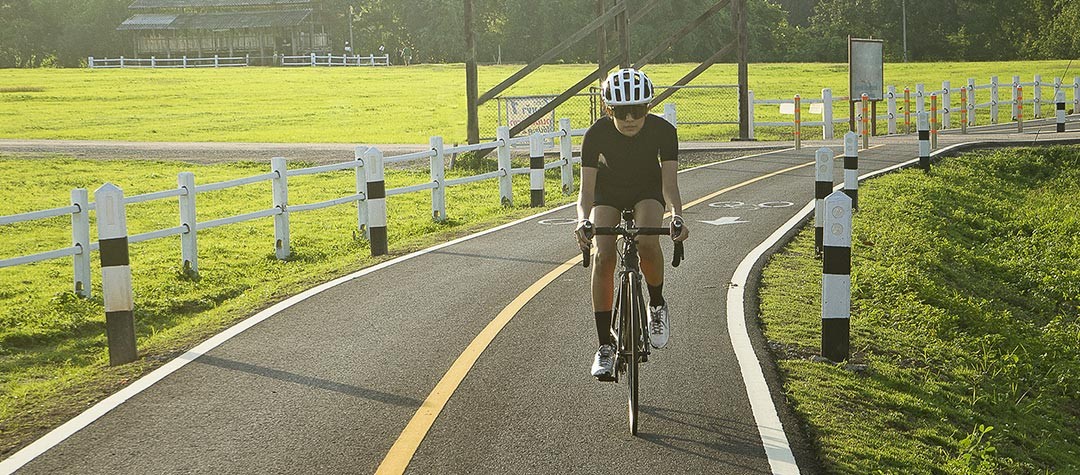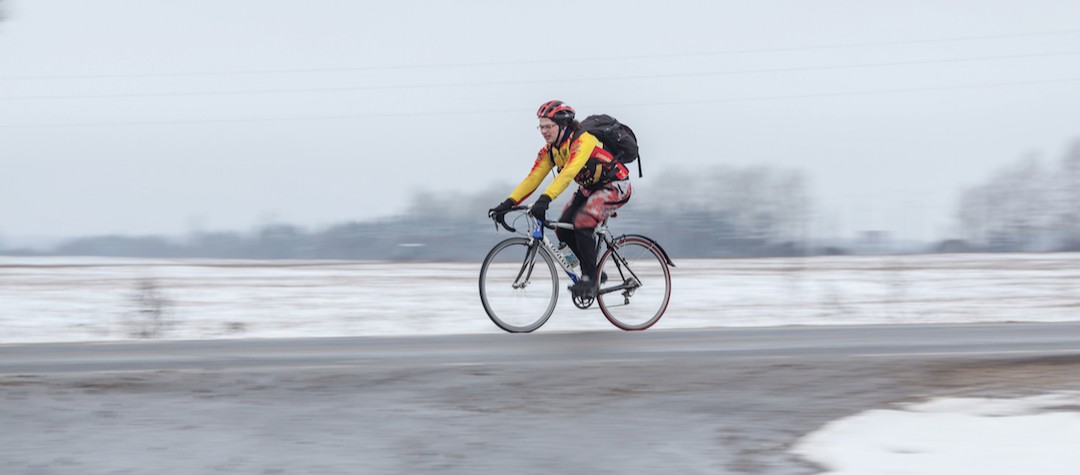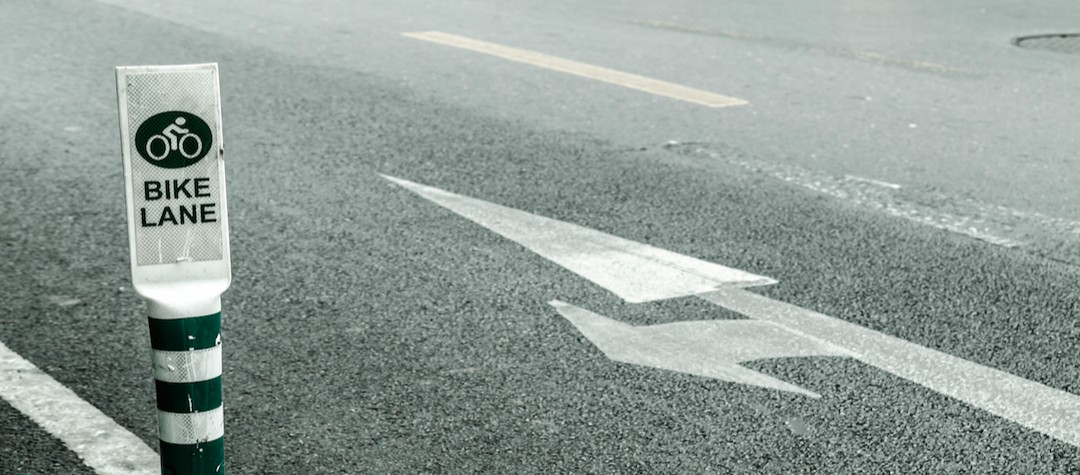Check out these tips to help you descend on your road bike with effortless skill and climb like a mountain goat.
The ability to climb and descend are two crucial skills you’ll need to possess if you want to get the most from your riding. They are both very different yet intrinsically linked; you can’t really have one without the other…so, let’s take a look at some of the key elements of both.
Climbing
Climbing is basically a fight against gravity but there are a few simple techniques you can adopt to make this constant battle a little easier. First up;
Gearing
Always ensure that prior to your ride, the gear ratio you have will suit the terrain you’re riding on, which means an awareness beforehand of your route. Are there any climbs? How steep are they?
Fortunately most modern bikes have ‘compact’ style gear ratios with a 50 x 34 front chain rings and 12-32 rear cassette which should see you over most climbs. On the long, strength-sapping climbs it’s a good idea to be under-geared than over-geared, just in case you get into difficulty.
Don’t go too hard
This is often known as ‘going into red’ and is something to be avoided. The key to climbing well is to pace and ride within yourself, trying not to go into that ‘red’ zone or oxygen debt. Aim to keep control of your breathing and keep a pace you are confident you can maintain. This is a skill that applies to all riders, from the novice to the Tour de France champion.
The actual speeds may be different of course but the principal remains the same. If you go too hard and into oxygen debt it is very difficult to recover. Find a rhythm that suits you particularly on longer climbs. It’s still important to ‘pace’ a shorter climb but as the effort is shorter you can afford to go a little deeper, especially if you can see the top!
Technique
On a climb most riders shift in and out of the saddle, depending on how steep the climb is. However, on a climb it’s generally more efficient to try and stay seated for the majority of the time, pedalling or spinning a low gear, rather than ‘churning’ a larger gear, whilst holding onto the tops of the handlebars. Doing this will create less stress and load on your muscles, effectively spreading the effort, making it easier to maintain for long periods.
On a climb it’s generally more efficient to try and stay seated for the majority of the time, pedalling or spinning a low gear, rather than ‘churning’ a larger gear...
Keep riding out of the saddle for shorter periods if you can, as far more energy is spent this way and it is generally harder to maintain. Riding this way is great for hauling yourself over particularly steep sections or simply to relieve the back muscles if you have been sat in the same position for a while, as well as making hard accelerations.
If you are new to cycling it may be hard to remain seated and you’ll feel you may want to constantly shift from in and out of the saddle and back again. This is quite normal, just be patient and focus on your rhythm and technique whilst keeping the gearing low.
Climbing psychology
Climbing is a very hard discipline which involves pushing your body to its limits. It isn’t easy and never will be, but that’s what makes it so rewarding when you look back at the climbs you’ve conquered. However, on long and/or steep climbs it is easy to be mentally defeated by the job at hand, especially if you’re having a bad day.
Rather than think of how horrible the climb is, try and break it down in your mind into easier chunks. Focus on a part of road (a sign, tree or landmark) up ahead of around 200-300 metres away and ride at a controlled pace until you reach that point before looking once more to another point further up again until you reach the top. It really does work!
Descending
Okay, you’ve got yourself up the climb, now it’s time to get back down! It’s one of the harder skills to master as speed can frighten people, but with practice and patience your skill and confidence will rapidly improve.
Look ahead
Many riders simply don’t look far enough ahead when descending, looking either at the wheel of the rider in front or the ground a few yards ahead. To help ensure safety and the ability to react, as well as keeping the bike stable and your descending more flowing and smooth, look much further ahead than the rider, wheel or bend in the road just in front of you.
Set your gaze on the point where you wish to end up; the other side of a bend for example, as you and your bike will go where you focus your view. Using this technique will give you more time to react to hazards as things happen much faster at high speed, but your brain still has the same reaction time it had at lower speeds.
Braking
Factors such as the type of descent, speed, your level of skill and experience are all things that will dictate when you need to start braking. The most important general rule to apply is to descend at a speed that you feel comfortable and in control of. Simply put; can you stop safely within the distance of road you can see in front of you?
The most important general rule to apply is to descend at a speed that you feel comfortable and in control of.
When braking on a descent always apply force gradually and equally to both front and rear levers, increasing the pressure rather than grabbing the brakes harshly or suddenly, as this will cause the wheels to lock up making a crash almost inevitable. On particularly technical descents keep your fingers just over the brake levers in readiness to respond and brake when you need to. Be aware that your braking distance will be far longer on a wet descent so start the braking process much earlier.
Corners
When slowing for a corner on a descent, shave off as much speed as you can on the approach to the corner rather than braking in the actual corner itself. Once you’ve slowed enough lean your bike into the corner with your right foot stopped at the downward stroke for a left hand corner and the left foot stopped at the downward stroke for a right hand corner.
Position
For improved aerodynamics and control hold onto the bottom of the handlebars (not too tightly) and lower your body into a more tucked position by relaxing your upper body and bending your elbows. This will lower your centre of gravity and help evenly distribute weight to both front and rear wheels, helping with traction and stability.
Remember, ride within your capability and don’t try to follow others if it makes you feel uncomfortable. The best way to improve your descending is gradually and steadily. That way you’ll have a solid foundation on which you hone your new-found skill.
Picture credit: Radu Razvan / Shutterstock.com















